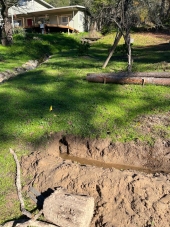Hi, This is a topic of great interest to me. Thanks for all the sharing.
After 30 years in Western medicine, family medicine & geriatric practice and teaching, I left it in 2008 and was certified in medical acupuncture in 2012. Knowing what western medicine can and can't do, I am amazed at what acupuncture can do. In my humble opinion it should be a significant part of any health care system, human or otherwise. My learning curve is still steep, yet I have had many successes after western medicine practices had failed. Great for peri-operative comfort and healing, or avoiding surgery altogether, and, and, .... I too have heard of many occasions where acupuncture has helped pets.
Wish I could treat animals with acupuncture, but there are licensing restrictions in my state of Maine.
As mentioned acupressure is a good option to consider Lana, at least as a starting point.
My father had an MD–PhD in Pathology, because he wanted to learn about the cause and progression of disease, which is something only pathology studies. (Yes, most MD's often don't know the actual cause of your malady, they only know how to treat the symptoms). My father felt that if you wanted to truly cure someone, you needed to address the cause.
Thank you L Cho for sharing your father's amazing journey. Agree totally, treating the underlying cause is key, whatever system of practice. A big part of that is taking a good history and physical, which is becoming a lost art in the time and dollar pressured business of medicine.
Will say, not sure I would agree a pathology degree is absolutely necessary to understand the causes, rather a strong emphasis on underlying issues as one goes through training and continuing that curiosity through your career whatever field of medicine you pursue. In any system lifestyle and the clients responsibility to care for themselves, preventive medicine, is paramount.
When I took my PDC in 2009 it was clear to me its principles were key to a healthy society, to our children's futures. THIS is essential medicine.
Appreciate the earlier reference to the
Four Paws, Five Directions, and
Touch of Health. Will check them out.
Thanks again.
TOxtli





